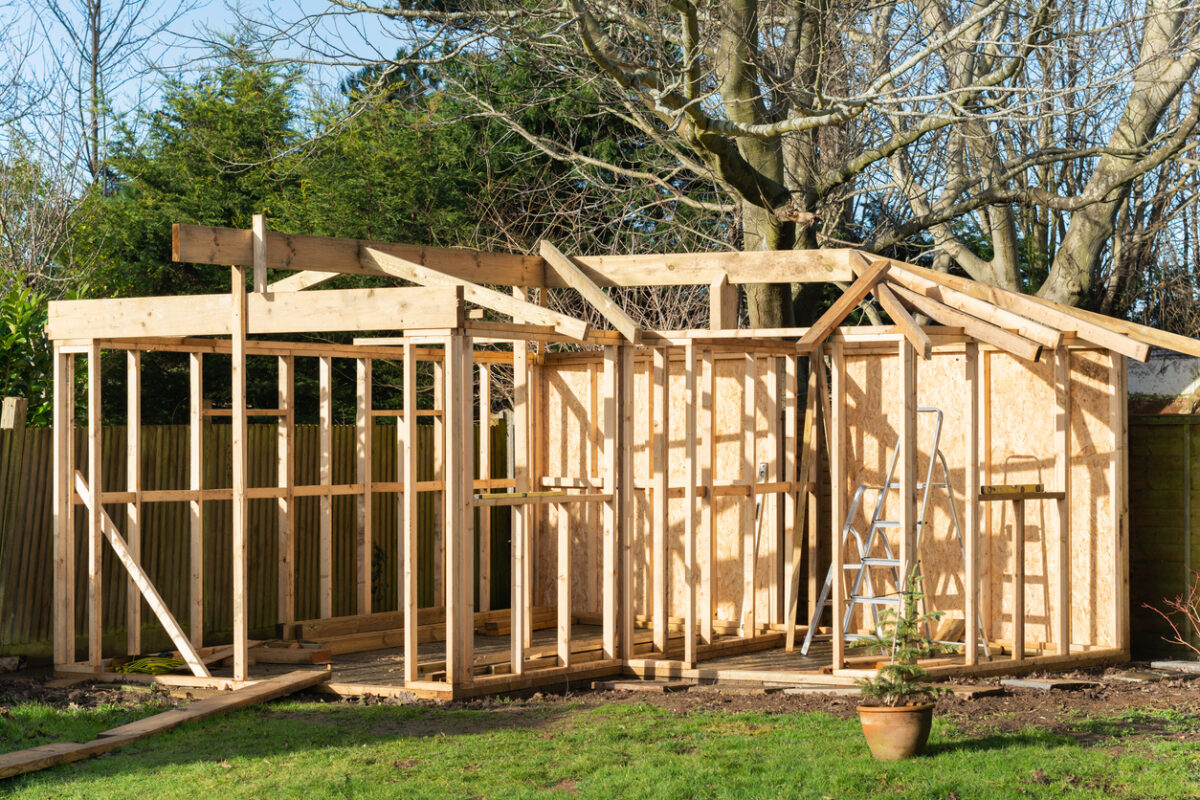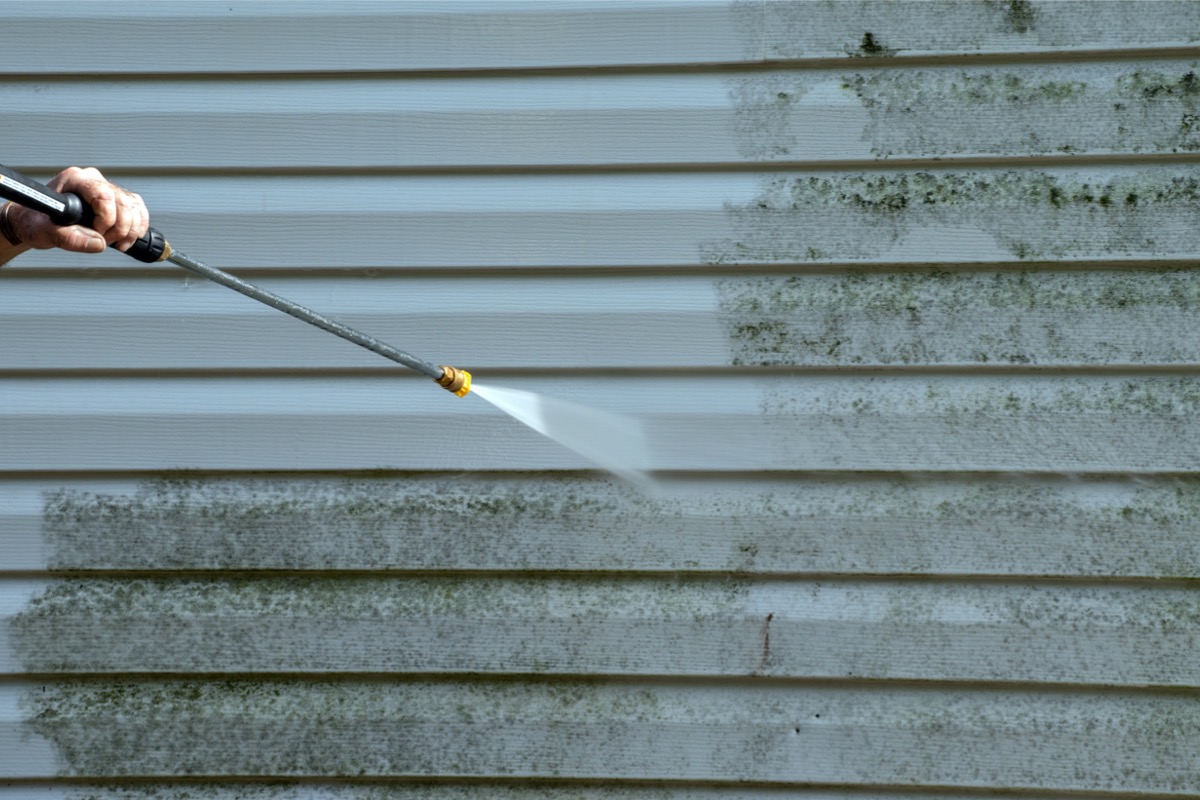

We may earn revenue from the products available on this page and participate in affiliate programs. Learn More ›
DIY projects can keep home maintenance costs low, but it’s important to only tackle jobs you have the knowledge, experience, and time to handle. A little bit of information can be a dangerous thing when it comes to fixes around the house, because what initially seems like a great idea could turn out to be a costly blunder.
Learning some basics about your home systems will help you make better decisions about repairs and updates. However, when armed with just the basics, your DIY solution might only hide ongoing damage or create further issues rather than effectively address them. To avoid bad outcomes, beware of these nine home fixes that can make problems worse in the long run.
RELATED: 15 Little Signs Your House Has a Big Problem
1. Treating Complete Clogs With Chemical Cleaners

There are many chemical drain cleaners out there that are formulated to clear stubborn clogs. These chemicals clear clogs by eating through the hair, fat, and other substances stopping up the drain line. In most cases, drain cleaners can be used to clear partial clogs without causing significant plumbing damage.
When a drain line is completely clogged, though, the chemical drain cleaner doesn’t have anywhere to go. It sits in the drain line and eats away at the clog, and the powerful chemical components can also corrode your pipes. A better option is to invest in a drain snake like this one from Ridgid—a favorite in our researched guide to the best drain snakes—to physically remove blockages.
2. Installing Structures on a Septic Field

Septic fields are outdoor spaces reserved for septic system wastewater drainage and treatment. Aboveground, a septic field’s open area may look like a great place to install a shed, floating deck, or gazebo, but building structures on a septic field can create significant septic system problems.
For instance, the weight of a deck on a septic field can collapse pipes and clog your septic system. Placing structures on a leach field also prevents the growth of beneficial vegetation, which normally reduces the effects of erosion and helps break down waste in the soil.
3. Pressure Washing Siding and Shingles

It may be tempting to pick up the pressure washer when it’s time to clean your house’s exterior, but using the machine improperly can significantly damage your siding and shingles.
Even if you do know how to use a pressure washer properly, you can still damage your home’s exterior if you pressure wash it too frequently. It’s generally a better idea to wash siding and shingles with a garden hose like this 50-foot Zero-G hose, a favorite in our researched guide to the best garden hoses.
4. Installing New Flooring Over Old Flooring

Tearing up old flooring is a task few homeowners enjoy, but simply covering up the old flooring with new is a risky endeavor. More often than not, old flooring will have existing damage, like chips, cracks, or stains. These imperfections create small pockets where mold and mildew can grow and spread completely unseen under the new floor.
Damaged flooring may also cause the new surface to wear prematurely, as it can sink into existing indents or jut out at underlying protrusions. Pieces of the old floor can also become loose, potentially shifting the new floor.
RELATED: 14 Mistakes Homeowners Make Every Fall
5. Applying Wood Filler to Floor Gaps

A quick fix for cracks and gaps in wooden construction materials is to add wood filler matching the color of the finish. However, using this trick on floorboards is a bad idea because even the best wood fillers can crack and crumble over time. This is due to the way hardwood floors flex and bend each time they are stepped on.
Unless you are using a flexible wood joint compound that retains its elasticity, filling floor cracks with wood filler can end up making floorboards look even worse than they did initially.
6. Concealing Your AC Unit

Homeowners don’t always have a choice when it comes to their AC unit’s outdoor location, and sometimes these clunky units make for awkward front-yard additions. In an attempt to improve their curb appeal, homeowners might plant trees, shrubs, or bushes around the AC unit to conceal it.
Unfortunately, this attempt at camouflage can actually cause the air conditioner to become blocked, preventing proper ventilation and clogging the entire system. Instead, leave ample space around AC units to avoid ventilation problems.
7. Fixing HVAC Leaks With Duct Tape

Duct tape was given its name because it was once the best option to fix HVAC systems. These days, there are still some types of duct tape that are specifically manufactured for this purpose.
For most HVAC applications, however, it’s better to use aluminum tape, which creates an airtight, waterproof seal and keeps leaks are properly plugged. Though duct tape has a strong adhesive and firm, flexible backing, it’s better suited for generalized repairs around the home.
8. Hiding Electrical Junction Boxes

Some homeowners may want to hide an electrical junction box in their home’s walls because they’re not very aesthetically pleasing. However, hiding a junction box behind drywall or in a cabinet is actually against the National Electrical Code.
Since junction boxes contain a home’s electrical connections, electricians need quick access to them if there’s an electrical issue with the home. If the box is concealed, the electrician might have to cut holes into walls to find the right junction box and resolve any problems.
Save your electrician some time (and avoid unnecessary drywall repairs) by installing an access panel or cover on your home’s junction boxes, rather than concealing them. If you’re planning any other electrical, plumbing, or structural updates, be sure to check with your local building code authority about other code regulations you need to know about.
9. Using Latex Paint to Cover Oil Paint

Painting is one of the most common DIY projects, and it’s a task that most homeowners are more than capable of doing alone. If you have ever painted a wall and had to deal with the paint peeling, chipping, and cracking just a few weeks or months later, though, you may have used the wrong type of paint.
If you use latex paint to cover a coat of oil paint, the latex won’t bond well to the oil paint underneath. Even though it will initially cover the old paint, you may have a chipping, peeling mess on your hands as the latex dries. Before buying gallons of paint to update your home’s interior, first find out if your current hue is oil- or latex-based.
